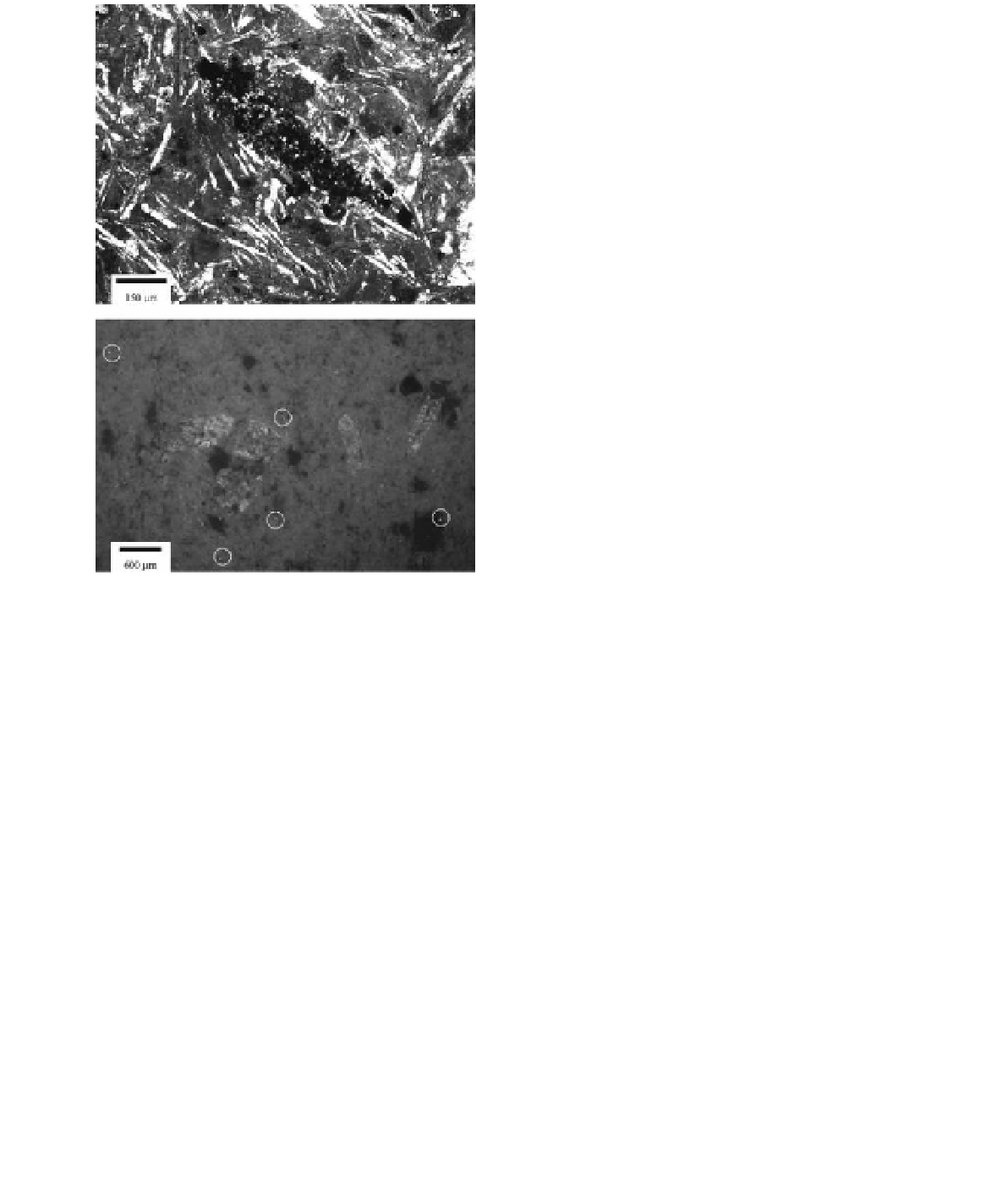Environmental Engineering Reference
In-Depth Information
through measure of their volume and weight.
effective porosity can be obtained by the follow-
ing equation: n = e/1 + e, where e is the void ratio,
e = (Gγ
w
/γ
dry
) - 1, and G the apparent specific grav-
ity of the material. in order to measure the degree
of saturation and water absorption, six cylindrical
specimens (53 mm × 130 mm) from ten different
volcanic rocks were submerged in distilled water
under a constant air vacuum pressure. Measure-
ments average values of the experimental data are
summarized in Table 1.
Porosity (n) was also obtained indirectly by pyc-
nometer tests, following the standard test proce-
dures described in Germaine & Germaine (2009).
The method defines the specific gravity of the
material as the ratio of the mass of a given volume
of soil particles to the mass of an equal volume
of distilled water (G
s
= γ
s
/γ
w
) where γ
s
is mass den-
sity of solids. Then porosity value is determined
through the phase relationships, which include
water content, density, void ratio (or porosity), and
saturation (see Bardet 1997).
Mercury intrusion porosimetry is a more
advanced and frequently adopted technique. it
consists in applying a set of increasing pressure
steps to a dry specimen and measuring the corre-
sponding mercury intrusion volume. The pore size
intruded at each step is determined by the pres-
sure applied to force mercury into a pore against
the opposing force of the liquid's surface tension.
Pore size frequency and connected porosity, and
mean pore size were obtained by a Pascal 140/240
Thermo-Fisher mercury porosimeter.
Two-dimensional digital image analysis is
another way to estimate and quantify porosity
(n). in this study, digital images were obtained
by scanning 13 thin sections using a photogram-
metric scanner at 600 dpi resolution (
Figure 2
).
in order to distinguish pore spaces and improve
the contrast with transparent minerals, the images
were acquired with a color background. Pores
Figure 1. Mineralogy and fabric characteristics of
weathered lava at different degrees. Upper photo: sample
sl3. Pyroxene (image centre) is almost totally replaced
by oxides. argilization is presented as blurred stain all
around matrix. lower photo: sample sl5. complete
alteration of all minerals is observed and only some
pyroxenes can be recognized from their partially-distorted
geometry (right hand side). Matrix is totally replaced by
argilization and small silica-amorphous minerals can be
observed (within circles).
2.1.5
Totally weathered lava SL5
complete alteration of all minerals occurs at
this alteration grade, but some pyroxenes could
be recognized from its partially-distorted geom-
etry. Matrix is totally replaced by argilization and
small silica-amorphous minerals can be observed
Table 1. summary of all porosity values from different
techniques for different alteration grades.
effective
porosity (n
o
)
Total porosity (n)
sample and
alteration
grade
Thin_
sect
3
MeThoDs
Pycnom X-ray
hg-por. isRM
aim of this study is to tests different methods to
quantify porosity of volcanic materials. effective
porosity (n
o
) was initially obtained following the
standard test procedure by isRM (1972). Proce-
dure consists in calculating dry density (γ
dry
) and
saturated density (γ
w
) of cylindrical core samples
Fresh (sl1)
0.146
0.060
0.128
0.110
0.060
slightly (sl2) 0.151
0.064
0.169
0.150
0.054
Moderately
(sl3)
0.285
0.256
0.185
0.186
0.023
highly (sl4)
0.331
0.307
0.150
0.320
0.210
Totally (sl5)
0.303
0.315
0.095
0.268
0.193






































